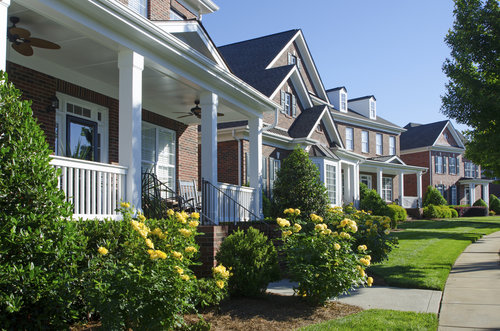The cliche goes that the devil is in the details, and in no sector of the economy is that adage more appropriate than housing, where many slow moving, nearly imperceptible trends gather momentum outside the mainstream’s gaze – and then 20 years later, they are redefining the marketplace as we know it.
A new report from Freddie Mac focuses on three such trends, and how they will shape the future of the housing market:
1. Increasing income inequality
The presidential campaigns of Bernie Sanders and, to a lesser degree, Donald Trump zeroed in on the widening income gap between the richest Americans and the rest of the population; and for good reason – the U.S. is more unequal than at any time since the Gilded Age, and nearly all the gains of the post-recession economy have gone to the very top.
That perspective on inequality, though, was not the focus of Freddie’s analysis. As Sean Becketti, the GSE’s chief economist, explained in the report, the high-spending lifestyles of the 1 percent do not have wide-ranging effects on the nation’s $22 trillion housing market. Rather, to find the engines of that change, we need to instead look at the fortunes of low-, middle- and high-skilled workers, and how economic demand for their respective services is shaping housing from the ground up.
Essentially, the nation’s middle class has been hollowed out. While demand for high-skill and low-skill workers rose from 1979 to 2008, demand for medium-skill work – which includes white-collar clerical jobs and blue-collar production work – has declined. Furthermore, the earnings of college-educated workers have outpaced those without a degree. In 1980, college-educated workers earned 50 percent more per hour than high school grades; today, that has jumped to 95 percent more.
Here is a chart that breaks down the shifting demand for jobs. Click on the tabs to adjust between men and women:
Men
| Skill Level | Change in Demand |
|---|---|
| Low Skill | 4% |
| Medium Skill | -6.5% |
| High Skill | 4% |
Women
| Skill Level | Change in Demand |
|---|---|
| Low Skill | 1% |
| Medium Skill | -15.5% |
| High Skill | 15% |
2. Land costs and housing prices
In the U.S., there is a most intriguing contradiction when it comes to new construction costs – despite being a very large country with plenty of open space for new housing, the land around dense, economically advanced metro areas is scarce, often to the point where the only method for building new homes is tearing down existing structures.
As a result, land in prime locations has become very expensive, and home prices have risen at a faster rate than construction costs. Since 1980, real home prices are up roughly 70 percent, while construction costs are up only 12 percent.
3. Land-use restrictions
Laws restricting the use of land are a favorite punching bag for housing analysts, and Freddie’s report cites some compelling research on the topic.
The research itself is a bit wonky, but the conclusions are straightforward – because land-use laws have increased housing costs in cities, it has become more difficult for low-wage workers to live in those cities. Thus, only high-wage workers can comfortably live in city centers, and housing costs continue to rise as they meet that demand.
The Impact on Housing
The aforementioned economic trends have created a dual track for housing: while homeownership is more difficult for lower-income Americans, it is quite robust for higher-income groups. Two charts demonstrate that divide perfectly.
First, this chart shows the homeownership rate by household income; clearly, rates are considerably higher among upper-income households:
| Income Group | Homeownership Rate |
|---|---|
| $0 to $35,000 | 47% |
| $35,000 to $50,000 | 58% |
| $50,000 to $100,000 | 67% |
| $100,000 to $150,000 | 80% |
| $150,000 to $200,000 | 82% |
| $200,000 to $250,000 | 85% |
| $250,000-plus | 86% |
And second, here is how homeownership is distributed across income groups:
| Income Group | Share of Homeowners – 1975 | Share of Homeowners – 2015 |
|---|---|---|
| $0 to $35,000 | 33% | 31% |
| $35,000 to $50,000 | 15% | 13% |
| $50,000 to $100,000 | 35% | 28.5% |
| $100,000 to $150,000 | 11% | 14% |
| $150,000 to $200,000 | 3% | 6.5% |
| $200,000 to $250,000 | 2% | 3% |
| $250,000-plus | 1% | 4% |
In Freddie’s report, Becketti writes that the trends of income inequality, land costs and land-use restrictions have developed at a “glacial” pace, at least relative to the sexier topics of mortgage rates and home prices. Yet, now in 2016, those three trends have had significant impact on the present housing market, and will determine where housing heads in the future.

